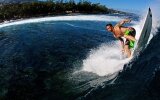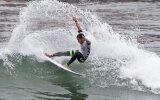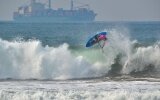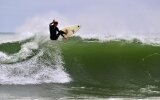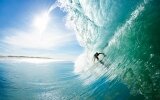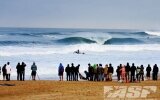- Magazine
- #readityourway
- Weekly Stories
- #shareyourstory
-
Adventure
- Abroad Travelling
- Africa Travelling
- Events
- Expos & Shows
- Festivals
- Fishing
- Free Diving
- Gliding
- Horse Riding
- Inspiring People
- Islands Travelling
- Kite/Windsurfing
- Motorbiking
- Motorised Water Sports
- Mountaineering
- Mountain Biking
- Off-road 4x4
- Off-road Motorbiking
- Paddling
- Performance Driving
- Photography
- Rock Climbing
- Rollerblading
- Sailing
- Scuba Diving
- Skateboarding
- Skydiving
- Snowboarding & Skiing
- Surfing
- Swimming
- Trail Running
- Wakeboarding
- Waveski Surfing
-
Sport
- Adventure Racing
- Fishing
- Free Diving
- Gliding
- Health & Fitness
- Horse Riding
- Inspiring People
- Kite/Windsurfing
- MMA
- Motorbiking
- Mountain Biking
- Multi-sport
- Off-road 4x4
- Off-road Motorbiking
- Paddling
- Performance Driving
- Photography
- Road Cycling
- Road Running
- Rock Climbing
- Rollerblading
- Sailing
- Scuba Diving
- Skateboarding
- Skydiving
- Snowboarding & Skiing
- Surfing
- Swimming
- Rugby
- Trail Running
- Triathlon
- Wakeboarding
- Waveski Surfing
- Lifestyle
- Calendar
SUP - Around the Coast of Death
Francesco Orsi | Photos: Francesco Orsi & Eugenia Mussa
Topic:
Surfing
Why would anyone want to leave the perfection of Portugal, with its sunny summers, beautiful beaches, caipirinhas cocktails and frequent small swells that are perfect for surfing or stand up paddling (SUP), and head to a place called Costa da Morte, which roughly translated means the 'Coast of Death', for an adventure-filled vacation?
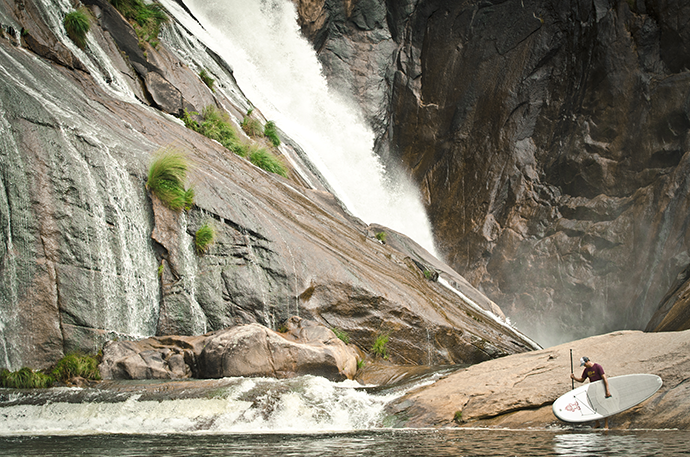
Well, simply because my girlfriend, Eugenia, and I wanted to get away from the masses and the name Costa da Morte seemed to promise less overcrowding.
Located between Malpica in the north and Cabo Fisterra in the south west, Costa da Morte lies hidden away, waiting to be discovered, in one of Spain’s most remote autonomous regions, Galicia. Its claim to fame is certainly not that of a quiet vacation place, but rather a stretch of coast cursed by sailors who gave it this name because of the many ships that have been smashed to pieces on its treacherous, rugged shoreline.
I was not unfamiliar with the area as I’d spent a few days there many years ago during a surf trip around the Peninsula Ibérica with some college friends. The beautiful landscapes, perfect waves and friendly locals impressed me so much I swore I’d return as soon as possible. However, different excuses kept me away until Eugenia suggested we go there, as she had friends who could show us some great surfing spots in the area. We were also getting tired of Portugal's endless summer, where summer and winter only seem to differ by the size of the swells. After doing a little research on the area surrounding Costa da Morte on Google Earth, I realised there was a whole section of coast I'd never visited before or even heard of. Judging by the satellite pictures and windows of swell that could potentially hit the coast in the next few days, conditions looked good. So, equipped with a pair of Astro inflatable boards, my lovely Starboard Pro 8'0", a couple of surfboards, sleeping bags and food supplies for about a week, we loaded our van and drove towards the unexploited shores of Costa da Morte.
On the map Costa da Morte looks like a small area and relatively easy to cross, but when you get there you immediately understand that what looked to be a modest distance is a maze of country roads that are difficult to navigate, even with the aid of a GPS. Galicia, especially Costa da Morte, has always been considered a poor rural region, with its economy dependent upon agriculture and fishing, and did not lend itself to massive modernisation. Yet it is this constant contact with the past and its authenticity that gives the region its appeal. The Galicians are fiercely proud of their culture, dialect and Celtic heritage; it is what makes them unique (they feel) within modern-day Spain. In fact, the Coast of Death reminds me of some Celtic landscapes that are similar to those found in some parts of Ireland.
Our search for mostly unknown surf spots proved more challenging than expected and we often got lost on the narrow, winding roads. However, this only served to remind us of how amazing it is to travel into the unknown. Despite its reputation as a surfer's paradise, Galicia has remained one of the remote frontiers of European surfing. It is also one of the last stretches of coast in continental Europe where it's possible to look for unridden or forgotten surf spots that aren't included on the big surfing routes, due to the geographical distance from major cities and airports, and so these spots have managed to preserve much of their original charm.
Bypassing the crowded beaches of La Coruña, the region’s capital, we made our way to Praia da Razo. Here you will find a beach break that works throughout the year, with all the tides, resulting in it being very popular amongst the surfers from La Coruña, and the many peaks ensure the absence of crowds. We stayed for a few days and enjoyed exploring the area between Razo and Malpica, which boasted a multitude of beach breaks sandwiched between rocky capes that you usually can only access by sea or walking through the woods. We also discovered a shallow lagoon that's well suited to flat water paddling.
Leaving the coast of Malpica we headed west to Laxe, an area that offers some good spots, like Soesto and Traba, which are particularly good for stand up paddling. Next we visited the ancient remains of many historical and archaeological sites, all fascinating and not to be missed if you are visiting the region.
Following the coast we reached Cabo Villano, and the stunning landscape and a couple of point breaks made us want to stay longer. The rotation of the swell, however, led us to move further south to Cape Finisterre, a rock-bound peninsula on the west coast of Galicia, and what the Romans, in ancient times, believed to be the end of the world. There are some very exposed beach breaks here, such as Nemiña, Praia de Rostro and Mar de Fora, which capture most of the swells and are extremely rewarding for SUP surfing. Whilst at Praia do Rostro we had one of the best sessions of the trip: after a cold night spent sleeping in our van, we were rewarded with the perfect head-high surf and no one on the line-up for at least two hours.
Heading south in the direction of Muros, we stopped at Praia de Carnota, the longest beach of the region at eight miles and boasting several peaks suitable for SUP. From there, we set out for Lariño and Praia da Area Maior. These spots have smaller waves than the ones in Finisterre, but they are usually cleaner.
Aside from the surf spots, we also came across a variety of great locations for flat water sessions along the coast, including numerous lagoons formed by the effects of the tides, the estuaries of small rivers and the famous Rias, a kind of deep and narrow fjord typical to the Galician coast. For river addicts, the interior offers various easy-to-find streams that flow to the ocean between waterfalls and rapids, and are surrounded by breathtaking scenery. We explored on our inflatable boards and our first experience in river SUP was an amazing one.
We had hiked through incredibly beautiful forests, home to the last wolves of the region, and along tiny, pristine rivers sandwiched between breathtaking gorges to untouched and uncrowded beaches. We had surfed perfect, unridden waves all alone and were surrounded by sheer wilderness. This was an outdoor adventure and traditional SUP experience we will not soon forget!
After a dozen nights in the van, we reluctantly left the beautiful Costa da Morte to return home. En route, we visited the famous city of Santiago de Compostela. The history of this region is marked by the pilgrimage to Santiago, which has attracted millions of pilgrims to this remote land over the centuries. It all started in 813 A.D. when the hermit Pelayo discovered the grave of Apostle James in this area, by following a shining star. For this reason the place was called, in Latin, Campus stellae, meaning 'field of the star', and later became known as Compostela. From that moment, Compostela turned into a pilgrimage destination, with more and more pilgrims following the way of Santiago, or the 'Way of Saint James', to absolve their sins. There are several routes you can take to get there, so we often came across pilgrims walking on the side of the road with their walking sticks and the distinctive scallop shell hung from their backpacks.
Back in Portuguese territory, we stopped at Peniche for a small swell and realised how different everything was to what we had experienced in Galicia. There were no pilgrims or unspoilt breaks here, only something that appeared to us like a huge surf amusement park that lacked any charm or authenticity. Yes, there are nice waves here, but when you come back from a place like Costa da Morte you get the feeling that you've travelled back in a time machine. Already, all the wonderful experiences, inspiring personal encounters and simple lifestyle we had in Costa da Morte were becoming a distant memory.
dinFO
Franz Orsi is an Italian-born designer, photographer and film maker. He currently lives in Portugal, near Lisbon, where he’s completing his PhD and works for Beyond Boards, a local company dedicated to SUP camps and distribution. He is an active windsurfer and paddler, part of the Starboard team and known as the guy who is always up for 'doing stuff creatively'. When he's not participating in competitions or hard at work, you’ll find him seeking outdoor adventures or planning his next SUP trip. For more info on equipment, SUP camps and sessions around Portugal, contact Franz at .
BEYOND BOARDS: http://vimeo.com/56349249
Issue:
Issue 23 Mar '13
Related content
|
|
|
|
|
|
|
|
|
|


